Introduction of high-quality and well-known coffee raw beans
Ethiopia (Ethiopia) mocha coffee raw bean Ethiopia mocha green bean
Arabian coffee is the hometown of Arabian coffee, which grows at high latitudes and needs a lot of manual care. Here is the famous Ethiopian mocha, which has a sour taste similar to that of wine, fragrant and productive.
Ethiopia also sells coffee through the port of Mocha in neighboring Yemen across the Red Sea, so Ethiopian sun-treated coffee is often referred to as mocha. Canada in the southwest and Sidamo in the south are the main producing areas. In addition, the Eastern Highland Hara is also famous for its coffee. The beans are small and fragrant, and Hara. Mocha "Longgubeli" is a special name with a unique flavor, usually only known as "mocha". Its specification is divided into G (grade) 1-G8 according to the mixing ratio of defective beans.
Baking method: medium ~ depth
Taste: both fragrant and sour, washing coffee has a strong sour taste.
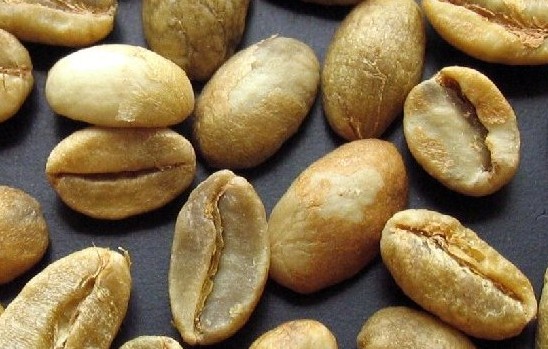
Tanzania coffee raw bean Tanzania coffee green bean
Most of the Tanzanian beans are grown in Mr. Kilimanjaro and Mt, near the northern Kenyan border. The Meru area, often called "Clemangaro", is occasionally named after the distribution center Moshi or Arusha. In addition, on the southern side of the border, a little washed Arabica beans are produced, named after the nearby big city Mbeya or the distribution center Pare. The way of grading is similar to that of Kenya, distinguishing sizes by the English alphabet. Most Tanzanian beans have typical African bean characteristics. The better Clemencaro, similar to ordinary Kenya, has a strong texture, is usually milder acidic than Kenya, and evenly stimulates the taste buds in the middle and sides of the back of the tongue. It tastes a bit like tomato or soda. As for southern beans, they are similar to secondary water-washed mochas, with soft and ingratiating weak acidity, round taste, and medium texture. Beans from neighboring Malawi also have the same quality as Tanzanian beans.
Coffee exports from Tanzania (Tanzania) play an important role in the whole national economy. Bean-shaped berry coffee is very productive and is said to be more fragrant than ordinary coffee. Generally speaking, the coffee beans in Tanzania have an extraordinary quality. For example, the fine Tanzanian AA coffee (Chagga AA), produced in the Moshi district near Mount Kilimanjaro, is famous for its full-grained and fragrant quality.
Baking method: medium ~ depth
Palate: soft acidity, elegant and sweet flavor, fragrant and attractive.
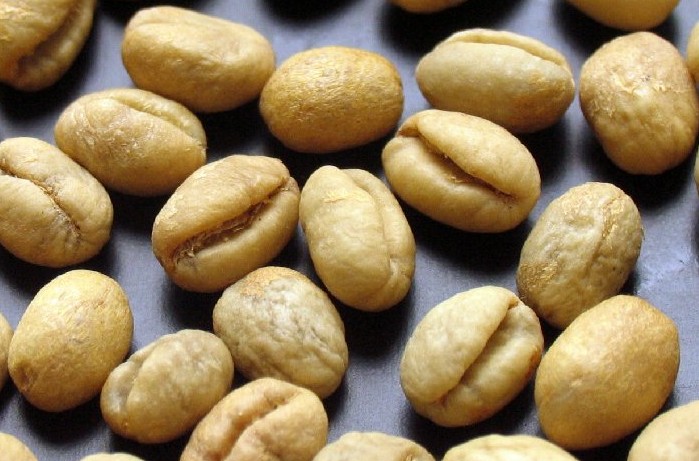
Indonesia Java Robusta raw bean Indonesia Java robusta green bean
In the early 1970s, Java cut down Arabica trees introduced by most Dutch and planted Robbosa beans instead. Since then, Java coffee has become greasy, plain and has a strong smell of wheat and tea. Of the few remaining Arabica estates, Djampit is the most famous. These beans are similar to other Indonesian beans, but they are more sour and less textured.
Indonesian coffee has a strong flavor, mellow taste, slightly syrup flavor and excellent acidity. Its two main export markets are Germany and Japan, which reflects the excellent quality of the coffee. What attracts consumers is the unique quality of its Arabica coffee beans. You can add milk or cream to high-quality Indonesian coffee without worrying about affecting its taste.
Java produces exquisite aromatic coffee with relatively low acidity, delicate taste and good balance. Java coffee has better aroma and acidity than coffee from Sumatra and Sulawesi. The best plantations in Java are Blawan, Jambit, Kayumas and Pankur. Java mocha is a mixture of Java coffee and Yemeni mocha coffee.
Baking method: depth
Taste: bitter and full-bodied, but also sweet, the unique flavor is still loved by many people.
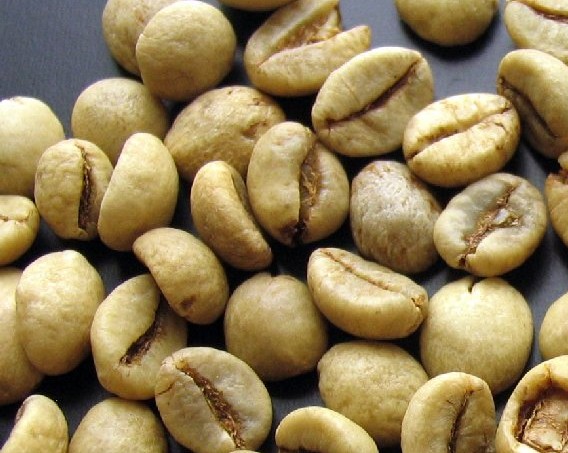
Kenya Coffee Raw Bean Kenya AA green bean
Coffee entered Kenya in the 19th century, when Ethiopian coffee drinks were imported into Kenya through southern Yemen. But it was not until the early 20th century that the bourbon was introduced by the St. Austin Mission. Kenyan coffee is mostly grown at an altitude of 1500 to 2100 meters and is harvested twice a year. To ensure that only ripe berries are picked, people must tour the forest about seven times. Kenyan coffee is grown by small farmers. After they harvest the coffee, they first send the fresh coffee beans to the cooperative cleaning station. The washing station sends the dried coffee to the cooperative in the form of "parchment coffee beans" (that is, coffee beans covered with endocarp) to the cooperative ("parchment coffee beans" is the last state of coffee beans before peeling). All the coffees are collected together, and growers charge an average price according to their actual quality. This trading method generally works well and is fair to both growers and consumers.
Kenyan coffee is produced near the Kenyan Mountains in the central part of the country and is sometimes named after the capital Nairobi to guarantee its quality. Here beans are graded by size, the largest is AA, followed by An and B, and so on, which has nothing to do with the origin, so the quality and characteristics of beans with the same AA grade may be quite different. With the exception of dry mochas in Yemen and Ethiopia, most coffee on the African continent is washed. Due to the support of the state, Kenya's average standard of washed Arabica beans is very high and is handled very carefully. Good Kenya beans not only have the same strong sour wine as mocha, irritating both sides of the tongue, it even has the rich texture that mocha lacks, and it can best brew a balanced drink in African coffee. The Kenyan government takes the coffee industry very seriously, where it is illegal to cut down or destroy coffee trees.
Kenyan coffee buyers are world-class buyers of premium coffee, and no country can grow, produce and sell coffee on a continuous basis like Kenya. All coffee beans are first acquired by the Kenya Coffee Commission (coffee Board of Kaeya, or CBK), where they are identified, rated, and then sold at weekly auctions, which are no longer graded. The Kenya Coffee Commission only acts as an agent, collecting coffee samples and distributing them to buyers so that they can determine price and quality. The auction in Nairobi is for private exporters, and the Kenya Coffee Commission pays growers below the market price.
The best coffee grade is bean-shaped berry coffee (PB) (Pea berry beans), followed by AA++, AA+, AA, AB and so on. The fine coffee is shiny, delicious and slightly alcoholic. People in the coffee industry all think that Kenyan coffee is one of its favorite products, because Kenyan coffee contains every feeling we want from a good cup of coffee. It has wonderful and satisfying aromas, well-balanced acidity, well-proportioned particles and excellent fruit flavors. Baking method: deep taste: strong sour and fragrant, especially well received by "Kenya AA".
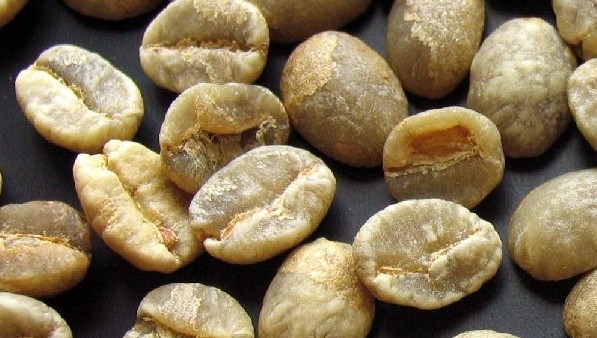
Columbia coffee raw bean Colombia coffee green bean
Colombian coffee is one of the few original coffee sold in the world under the name of the country. In terms of quality, it has won praise unmatched by other coffee. The country is the world's largest exporter of Arabica coffee beans, while robusta coffee is rarely grown. It is also the world's largest exporter of washed coffee beans (Washed beans). Compared with other producing countries, Colombia is more concerned with developing products and promoting production. It is this, coupled with its superior geographical and climatic conditions, that makes Colombian coffee excellent in quality and delicious and famous all over the world. Colombia is the second largest coffee producer in the world, accounting for about 12% of the world's annual output, which is much lower than that of Brazil, which is 30% to 35%, but most of them are high-quality mountain-washed beans.
Central Colombia is divided into valleys by three north-south longitudinal mountains, of which the central and eastern mountains are the main coffee producing areas. The coffee here is named after a distributed market, with Medellin, Armenia and Manizales in the Central Mountains and Bogota and Bucaramanga in the eastern mountains. The most famous Medellin in the Central Mountains has a thick texture, rich aroma and well-balanced sour taste, while Armania and Manizares are not so good, but in the market these three kinds of beans will be regarded as the same kind of beans to circulate, called "MAM". If you buy a bag of MAM, it may be any of these three kinds of beans, it has a texture and flavor similar to Medellin, but not so sour; as for Bukala, it has the characteristics of Sumatra, with thick texture, rich taste and weak sour taste. According to the size of the particles, the highest Columbia beans are "Supremo" and the second are called "Extra", but in the market these two levels are often referred to as the same grade, called Excelso. The best Colombian beans, similar to Costa rica or Hawaiian Cona beans, are non-extreme coffee, rich in texture, but not as strong as Sumatra; rich in aroma, but not as good as the best Jamaican alpine flavor; sour, but not as sour as Antigua acid. It often has a caramel-like taste, similar to the aroma of pudding, lack of sour fruit, reminiscent of milk pancakes; it is also suitable for blending mixed coffee. Since the 1970s, with the full promotion of the Colombian government, many old trees have been replaced by new species with high yields, but critics believe that the new coffee is milder and more common than the old ones, and its quality is much lower than it used to be.
Baking method: medium ~ depth
Taste: sour, bitter, sweet and strong
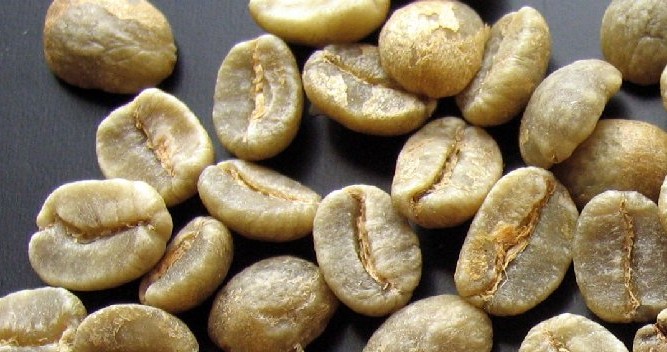
Brazilian coffee raw bean Brazil santos coffee green bean
Although Brazil produces 30 to 35% of the world's coffee annually, ranking first in the world, none of the Brazilian beans can be called the top coffee. The mountains are covered with coffee trees in southern Brazil, but Santos is the only one that can be put on the table; most of the other hastily processed beans are used to make instant coffee and easy-to-open coffee.
Santos Coffee is a descendant of Arabica trees from Island of Bourbon (today's French island of Reunion, located in the Indian Ocean east of Madagascar) in the 18th century and belongs to the var subspecies. Bourbon). Before the age of three to four, Bubang coffee trees bear small, twisted beans called "Bubon Santos", the most advanced Brazilian beans, often referred to directly as "Brazil" in cafes. After the age of three or four, Bubang coffee trees will only produce large, flat beans, called "Flat Bean Santos", which are cheap and unpopular with coffee people. Bubang Santos does not have a prominent personality, plain taste, medium texture, ordinary sour taste, usually used as the base of mixed coffee, specially set off other coffee. One feature, however, is that it is rich in oil, which is a welcome advantage for those who do not like to mix Espresso complex products with robusta beans-it guarantees you a thick Krima. Brazilian coffee with low acidity and medium roasting from the World Coffee Center is suitable for public taste.
Baking method: medium baking
Palate: mild, moderate bitterness, soft aroma
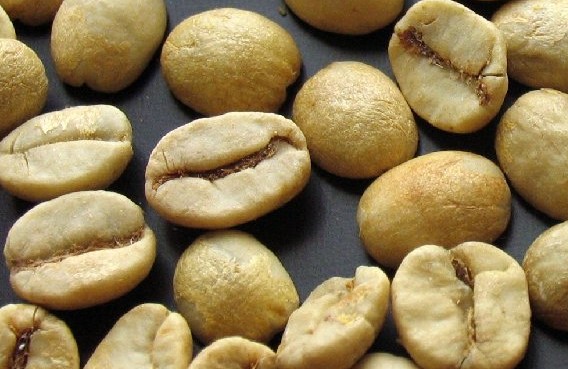
Indonesia aged Mantenin raw bean Aged Mandheling green bean
Indonesia's Sumatra Islands produces coffee, which is rich in coffee because of its unique geographical location, climatic environment, longitude and latitude. Indonesian coffee has a high mellowness, weak sour taste and strong aroma. The more famous area is Lin Dong area.
Manning is also the representative of Indonesian coffee. It is worth mentioning that some coffee lovers like the so-called "Mamba Coffee", which is a mixture of Manning and Brazilian coffee. The main producing areas are Sumatra, Java and Sulawesi. 90% of them are Robbosa species, which can be rated as the first in the world in quality.
Sumatra is best known for its rich, palatable and most advanced "Mantenin". In addition, "Jiayu Mountain" is also produced in the north of the island, while Java Arabica has a good sour taste, especially loved by the Dutch.
Sulawesi Island is produced by a large grain of "Kalosi", represented by Delaga in the mountains of the southwest (elevation 1200 meters). Arabica coffee beans were originally grown in the Indonesian archipelago, but later, due to a near-extinction disease, Indonesia was not allowed to grow a large number of Robasta coffee, which is more resistant to diseases and insect pests. Therefore, at present, most parts of Indonesia adhere to the planting of Robasta coffee trees, and of course, Arabica is famous for its high quality. There was a time when it was illegal to grow coffee trees in Arabica in Indonesia Sumatra's high-grade Mantenin, its unique fragrant taste, slightly acidic taste, the quality can be said to be the first in the world.
In addition, Arabica coffee produced in Java is the favorite of Europeans. It is sweet in bitterness and sour in it for a long time. At a time when Blue Mountain had not yet been made public, Manning was considered to be the best product in the world. after baking, the beans were very large, raw beans were brown or dark green, with a special caramel flavor, mellow taste, sweet and bitter without soft acidity, but bitter. The production volume is relatively small, so the price is slightly higher than the general coffee beans.
Mantenin is mainly produced in Java, Sulawesi and Sumatra, 90% of which are Robusta species. Among them, the "Manning" produced in Sumatra is the most famous. As the Mantenin coffee beans themselves do not have sour characteristics, so the general special blending methods are based on Mantenin coffee beans, in the long-term heat preservation or preparation of iced coffee, there is no unpleasant sour taste. Aged manning is a specially treated bean. Raw beans are not on the market until they are stored in the place of origin for a period of time, which reduces its acidity and aroma, and its taste becomes more round, thick and similar to syrup, thick but not abundant, which can be said to be Pu'er tea in coffee.
Origin: Indonesia Sumatra, North Sumatra, Indonesia.
Baking method: Vienna baking Vienna Roast.
Taste: full-bodied, sweet and bitter, low acidity, smooth taste.
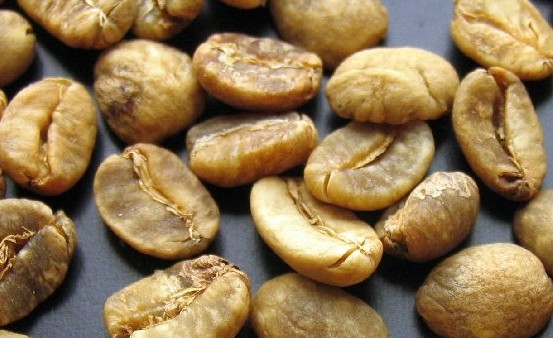
Hawaii Kona Extra fancy kona
A coffee producing area considered to be one of the best in the world must cover six important factors: soil quality, altitude, sunshine, cloudiness, rainfall and slope. Hawaii is blessed with these six elements to produce the best and most respected coffee in the world. Soil: fertile tropical Hawaiian volcanic soil that provides the dense nutrients of the Kona Coffee Tree. Altitude: the appropriate altitude of 2100 to 3600 meters and the cool moonlight promote the fruit of Kona Coffee to ripen slowly and create an excellent taste with rich appearance and full moisture. Rizhao: the warm tropical sun plays an important role in the reproduction of coffee trees. Hawaii provides the morning light that Kona Coffee needs. Cloud cover: due to the rise of clouds at noon, the severe direct sunlight is ensured and stopped. Rainfall: cloud cover brought enough Rain Water, so that after a morning sun coffee, eager to enjoy the afternoon Rain Water's moisturizing baptism. Slope: a good slope makes Kona coffee absorb enough water in the soil without absorbing too much and affecting the flavor of the coffee. Kona usually retains his sour brightness and aroma with medium or very light baking. The Kona brewed in a siphon coffee pot is full-bodied and balanced, with a strong and unique personality, suitable taste, without any unpleasant taste; ordinary coffee will look sour after a few more minutes, while Kona, when the temperature drops, it is very rare to keep balance and taste.
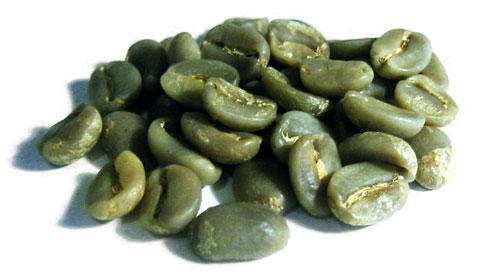
Yunnan small grain coffee Bourbon Bobang AA grade
The western and southern parts of Yunnan Province are located between 15 °N and the Tropic of Cancer, and most areas are 1000-2000 meters above sea level. The topography is dominated by mountains and slopes, with large ups and downs, fertile soil, sufficient sunshine, rich rainfall and large temperature difference between day and night. These unique natural conditions form the particularity of Yunnan small grain coffee taste-strong but not bitter, fragrant but not strong, slightly fruity. Bourbon (Bourbon) is a small-grain coffee widely cultivated in Yunnan at present. It is a variety of small-grain coffee second only to Tibika. At first, the main branch and trunk grew upward at 45 degrees, and with the fruit load, the lateral branches were denser, the fruit was more, and the yield was higher. But the berries are smaller and ripen more slowly. In 2005, the top (AA grade) bourbon coffee in Baoshan, Yunnan Province, was selected by machine and then manually selected. Bourbon is full-bodied and well-balanced, with charming soft acidity and a hint of sweetness. Full city baking is recommended. Siphon coffee, mocha pot making, Italian espresso are all good choices, especially recommend espresso double to make bourbon coffee, you will have unexpected surprises.
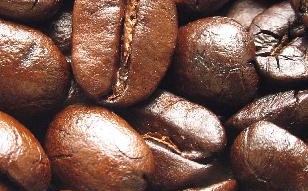
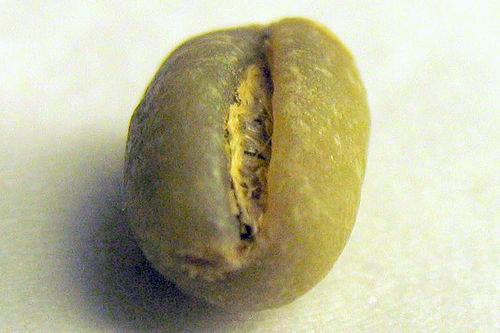
Important Notice :
前街咖啡 FrontStreet Coffee has moved to new addredd:
FrontStreet Coffee Address: 315,Donghua East Road,GuangZhou
Tel:020 38364473
- Prev

Introduction to the origin of high-quality coffee beans
* Brazil is the most important coffee producer in the world, accounting for 1gam3 of the total output in the world. Brazil has 10 states that produce coffee beans. Due to differences in region and climate, the quality of Brazilian coffee beans is inevitably different. Therefore, Brazilian coffee beans are divided into NO. 1~NO. 3To keep the quality neat and stable, and to produce better results when processing and roasting. Brazilian coffee.
- Next

Arabica Robusta coffee beans
In terms of varieties, coffee trees are mainly divided into two types: one is Arabica, and the other is Robusta Arabica Robusta, which is mainly produced in tropical Central and South America and on the island of Madagascar in west and central Africa. Indonesia in Asia is planted on alpine slopes at an altitude of 9002000 meters above sea level and on alpine slopes at an altitude of 200600 meters above sea level.
Related
- Guji coffee producing area of Guji, Ethiopia: Humbela, Shakiso, Wulaga
- What is the most expensive variety of Qiloso in BOP multi-variety group?
- How to store the coffee beans bought home?
- Why are Yemeni coffee beans so rare now?
- Ethiopian Sidamo all Red Fruit Sun Sun Santa Vini Coffee beans
- SOE is mostly sour? What does it mean? Is it a single bean? what's the difference between it and Italian blending?
- Is Italian coffee beans suitable for making hand-brewed coffee?
- How to choose coffee beans when making cold coffee? What kind of coffee beans are suitable for making cold coffee?
- Just entered the pit to make coffee, what kind of coffee beans should be chosen?
- Can only Japan buy real Blue Mountain Coffee? What are authentic Jamaican Blue Mountain coffee beans?

